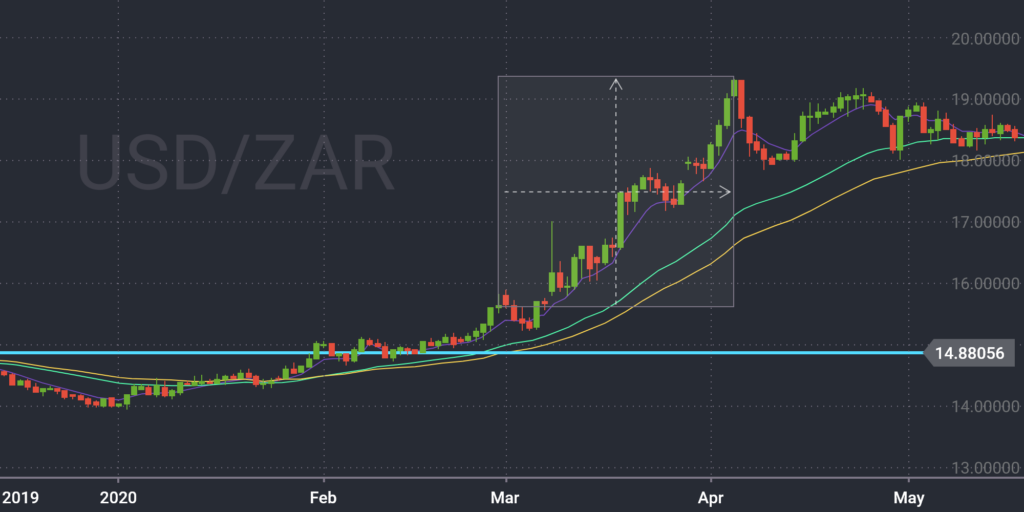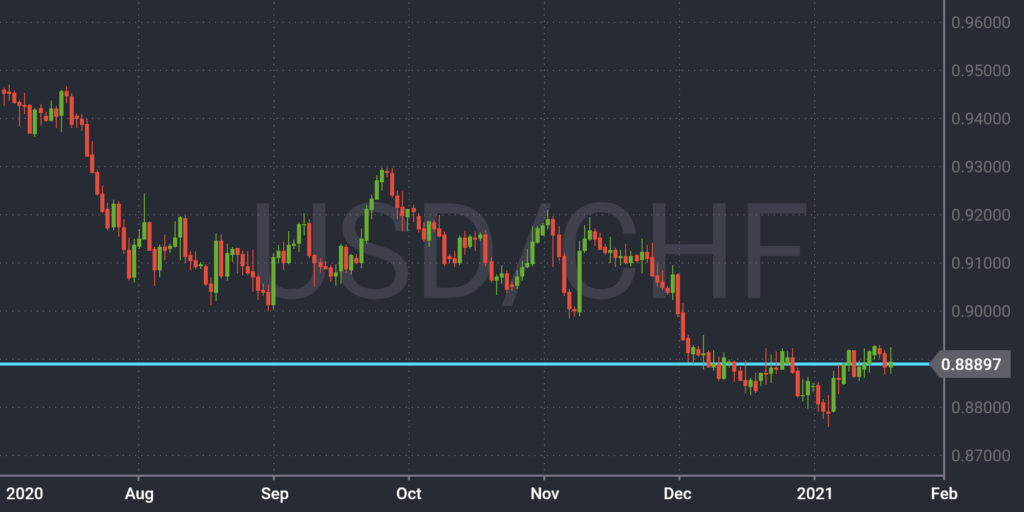The forex market is affected by many factors. IronTrade traders constantly adapt their strategies to make the most on the volatile currency pairs. As we know, volatility is the measure of how considerably prices change. It gives an idea to traders of how much a currency might move in relation to its average over a specified period. Typically traders estimate volatility by using the Average True Range indicator. Higher volatility implies higher risk (and possible profits) and vice versa.
Many IronTrade traders like the opportunities that come with volatile trading pairs even though it presents higher risks. Potential rewards are really impressive.
Here are the most volatile currency pairs presented on IronTrade:
AUD/JPY
AUD/USD
USD/ZAR
AUD/GBP
Other popular currency pairs are generally less volatile because of their developed economics. For example, EUR/USD, USD/JPY, GBP/USD, USD/CHF, etc.
On the other hand, currencies of developing markets (such as USD/ZAR, USD/TRY, USD/MXN) can also be highly volatile over some periods. Generally, these pairs have low liquidity and high volatility because of inherent risk and emerging market economies.

Picture 1. USD/ZAR (South-African Rand) chart.
As we can see in picture 1, USD/ZAR has risen over 25% higher in just several months. Such dramatic swings can happen only in emerging or developing markets.
Trading with less volatile currency pairs
Low volatility usually implies the stability of a currency and a country’s economy. Usually, it attracts more volume and more excellent price stability. That’s why EUR/USD, USD/CHF, and GBP/USD always have enormous trading volumes and less volatility. They are more liquid and less exposed to sudden drops or rises. The Average True Range (ATR) for USD/CHF ranges between 45 and 65 pips, which is very low compared to other currencies. The Average True Range is the indicator that measures the volatility of a currency pair. You can also use Bollinger Bands to do it. Both indicators are available on IronTrade.
Another thing is the correlation between currencies. The more positively they correlate with each other, the less volatility the currency pair has. For example, both USD and CHF are considered safe-haven currencies. They both strengthen against other currencies, so they do not strengthen against each other. This factor also contributes to the low volatility of USD/CHF.

How to trade volatile currency pairs
Traders should check the current volatility and possible changes in volatility. Ensure that you understand how to measure volatility and that you are aware of forthcoming events that may change volatility significantly. Also, put the appropriate investment amount depending on the recent volatility situation. If you trade with a volatile currency pair, you may want to reduce your investment due to higher risks.
Here are some tips on how to adjust your trading style for currency pairs with low and high volatility:
- High volatility currencies usually move more in a certain period. It imposes a higher risk for traders.
- High volatility currencies make more significant moves, so you should carefully put the investment amount when trading them.
How to measure volatility
You can do it with the help of Average True Range (ATR) and Moving Averages. These indicators are available on IronTrade (just open the trading room and go to settings to enable them).
Finally, here are several tips that every trader should know about volatility:
– Big news or events like Brexit or US trade wars usually make a big impact on volatility. Releases of some important data are also quite essential and influence it.
– You can use various economic calendars to stay ahead of the news. Economic calendars provide information about the dates and times of significant data releases. Even some pairs are volatile, they still obey technical aspects of trading. For example, support/resistance lines and price patterns. So, traders can take advantage of the volatility using technical analysis.
Stay tuned to the latest Forex news. Check IronTrade’s news and analysis sections to predict possible changes. Our newsletters provide forecasts 3 times a week to help you stay informed about the latest trends. You can follow all currency pairs mentioned in this article on IronTrade using a demo account. Or you can take advantage and earn on them using a real one along with a full set of indicators and other instruments. Good luck!




